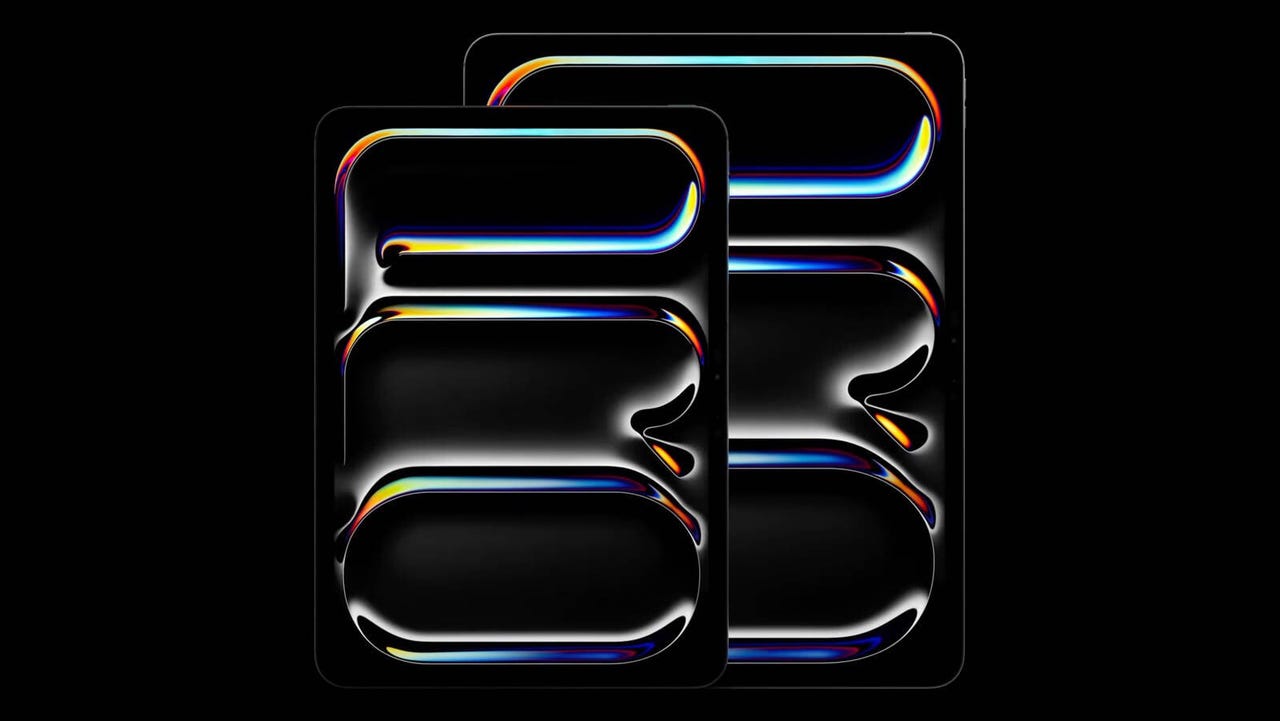What iPad Pro's Tandem OLED tells us about future device screens


Apple last week unveiled its highly anticipated iPad Pro tablets that, for the first time, sport OLED displays instead of liquid crystal displays (LCD). Cupertino calls the technology Tandem OLED and aims to deliver what it calls an "Ultra Retina XDR" screen.
Despite its recent introduction on iPads, the technology behind Tandem OLED is not new. The display industry term for it is a two-stack tandem structure OLED display, and it was first applied for displays on automobiles, pioneered by LG Display in 2019.
In a two-stack tandem structure, an OLED display has two emissive layers or layers on the display that emit light. These are the layers that numerous red, green, and blue OLED, or organic light-emitting diodes, are deposited on to emit light when they receive electricity.
Also: The M4 iPad Pro's true potential will be realized at WWDC, and AI will have a lot to do with it
This is as opposed to a single-stack structure, where the display houses one emissive layer, which has been the norm for OLED displays on smartphones.
So why the different technology for tablets over smartphones? It's because tablets have larger screens and people use tablets longer. So they need to be brighter and more durable.
The two-stack structure was first used for displays on automobiles for the same reason. Larger screens for heads-up displays require more power to "light up" and these displays on cars have to last a long time to match the life span of the vehicles.
Also: Four reasons to buy Apple's 2024 iPad Pro (especially if you own an older model)
However, bringing this technology to tablets presented additional challenges because tablets are portable, which means they are exposed to more generally bright environments. Portable devices also rely on batteries, so power management becomes a bigger issue than, say, with OLED TVs, which have a constant power source. By having two emissive layers, Tandem OLED can better decide when to turn pixels on and off to maximize their dynamic range and power consumption more efficiently.
Apple touted the brightness of its Tandem OLED, which peaks at 1,600 nits, a level that premium smartphone screens offer. While OLED displays have been on tablets and notebooks for years now by other companies besides the iPhone maker, they fell just short in quality of their smartphone counterparts, as they remained mostly single stack. But no more.
Apple ships millions of iPads a year, so this can only mean that it is procuring Tandem OLED from both Samsung Display and LG Display, its OLED display suppliers for iPhones -- not just one of them. To secure such a customer as Apple, and an iconic product like iPads, display makers will be incentivized to improve their yield -- or production efficiency -- for OLED displays aimed at tablets and notebooks going forward. This will give them manufacturing experience and enable them to expand dedicated production facilities to drive down the costs of these displays. This has been something they were hesitant to commit to so far, due to concerns over whether the demand was there.
Also: iPad Pro (2024) vs. iPad Air (2024): Which Apple tablet is best for you?
OLED's benefits over LCD in contrast ratio, perfect black, and thinness are well-known. This has been proven time and time again on smartphones and TVs, where premium OLED displays are fast becoming the norm. Tablets and notebooks have been missing out.
Cupertino's stamp of approval for the technology will now only make premium OLED more ubiquitous on mobile devices besides smartphones. This is a win for set makers, display makers, and most importantly, customers.